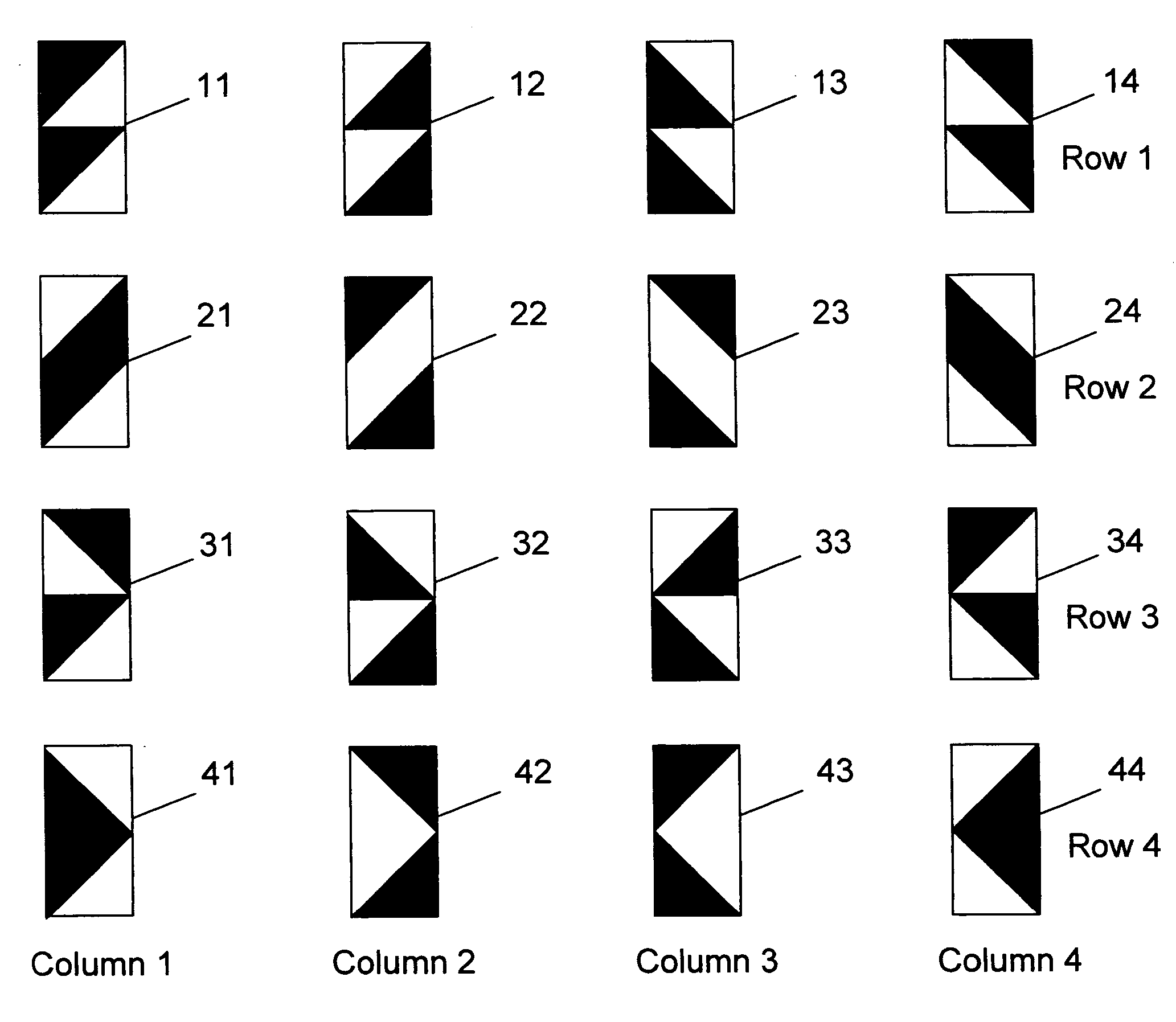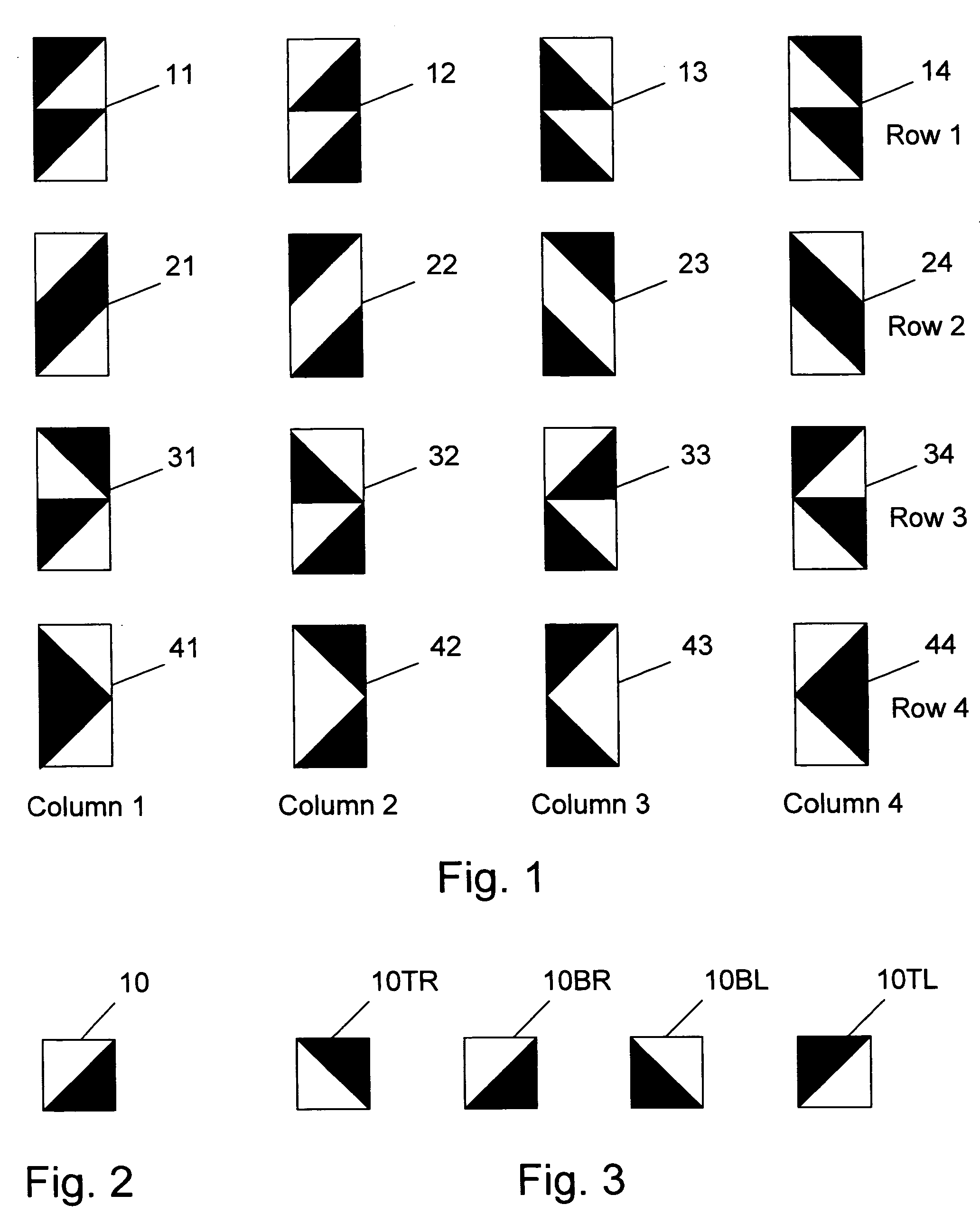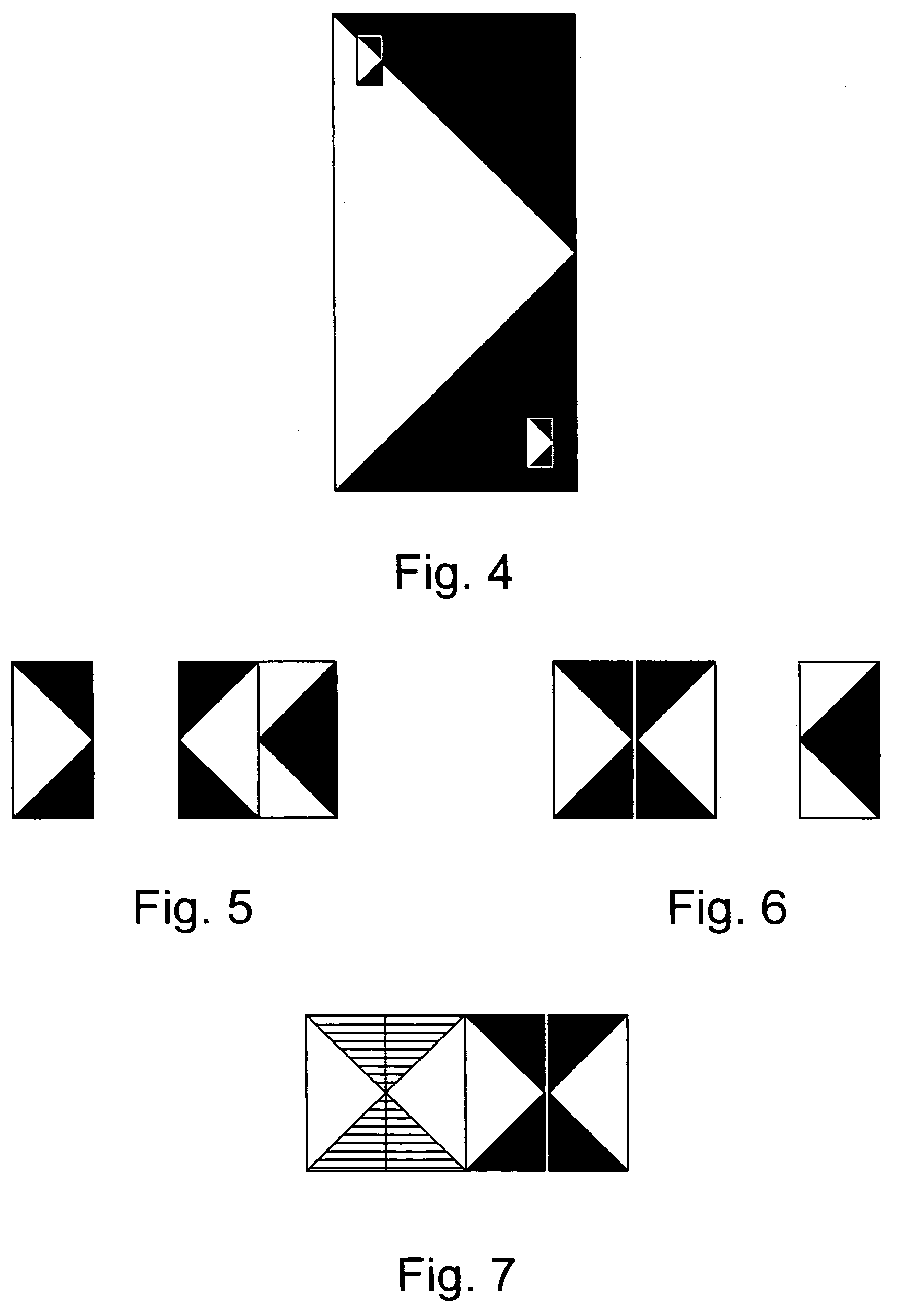Mosaic playing-cards
a playing card and mosaic technology, applied in the field of mosaic playing cards, can solve the problems of limiting the opportunity for cross-cultural play, and being offensive to some and foreign to others, and affecting the enjoyment of the ar
- Summary
- Abstract
- Description
- Claims
- Application Information
AI Technical Summary
Benefits of technology
Problems solved by technology
Method used
Image
Examples
example one
Stud Poker
[0204] Stud Poker is a simple example of a set collection type game. Many of the Mosaic deck's important attributes become evident in the following description of a hypothetical hand of stud Poker:
[0205] Mosaic Poker hands are ranked based upon the quantity and quality of cards collected in sets that are geometrically related-as: reflections, complements, contraries, or identities. A ranking values most cards in a series of uniform relations (one card to another).
[0206] The second consideration of rank is the suit quality of the series (as in the suit color being red, black, etc.). A flush is best, followed by a combination of suits bridged by the base color field. The least desirable quality is a mixed combination of suits wherein differing suit fields are adjacent in the completed series. Thus, the complete ranking from best to worst can be outlined as follows:
[0207] Chain (5 cards)—Flush / Common / Mixed
[0208] Run (4 cards)—Flush / Common / Mixed
[0209] Full House (Triad+C...
example two
Array
[0220] The Mosaic deck can be used to play games in which the object is pattern development. The following example is a geometric pattern game named “Array:”
[0221] Array is a competitive game between two players. The object of array is to be the first player to arrange 16 randomly dealt cards into a pattern having both horizontal and vertical axes of symmetry.
[0222] The 64 card Mosaic deck is further divided into two equivalent 16 card sets. Further, only two of the four card families are used (in order to simplify the game). For the example shown in FIGS. 38 and 39, only the Para and Tessa families are used. Each set is then dealt face up into an equivalent rectangular array. FIG. 38 shows a random array as dealt. Playing in turn, each player then attempts to reorganize his or her array into one having the aforementioned horizontal and vertical axes of symmetry. Each turn consists of one of the following moves: [0223] Card Swap—The position of any two cards may be swapped. [...
example three
Sequences
[0231] The object of Mosaic games can include the development of geometric sequences (as opposed to geometric patterns). A geometric sequence is formed by laying out the cards in a series of repeating relations of three or more cards. The following game—referred to as “Sequences”—demonstrates this operational characteristic:
[0232]“Sequences” is a competitive game between two or more players. The object is to meld cards to the table in related sequences. The player to meld all his or her cards first is the winner (All players start with the same number of cards). Scoring could include a one-point penalty per card remaining in the losers' hands. To wager, the players might bet an amount to be paid the winner per card remaining in the losers' hands.
[0233] Each player is dealt seven cards. A “start card” is then dealt from the deck onto the table. FIG. 40 shows a typical sequence. The top card in the view is the “start card” dealt first. In turn each player may meld one or m...
PUM
 Login to View More
Login to View More Abstract
Description
Claims
Application Information
 Login to View More
Login to View More - R&D
- Intellectual Property
- Life Sciences
- Materials
- Tech Scout
- Unparalleled Data Quality
- Higher Quality Content
- 60% Fewer Hallucinations
Browse by: Latest US Patents, China's latest patents, Technical Efficacy Thesaurus, Application Domain, Technology Topic, Popular Technical Reports.
© 2025 PatSnap. All rights reserved.Legal|Privacy policy|Modern Slavery Act Transparency Statement|Sitemap|About US| Contact US: help@patsnap.com



